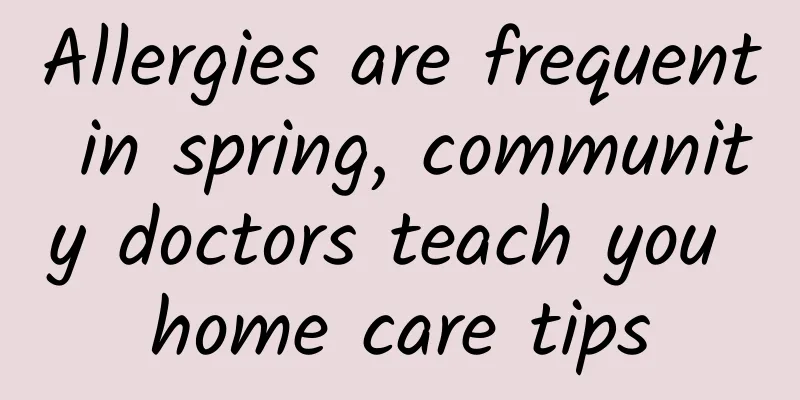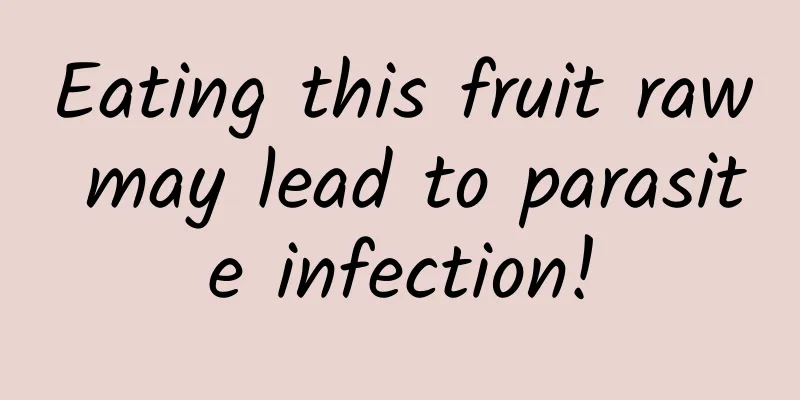Allergies are frequent in spring, community doctors teach you home care tips

|
Reading time: about 6 minutes, full text 1500 words According to data from the Chinese Center for Disease Control and Prevention, the prevalence of allergic rhinitis in my country has reached 17.8%, and the concentration of pollen in spring has increased by more than 30 times compared with winter. Based on immunological mechanisms and clinical practice, this article systematically analyzes scientific strategies for home care to help allergy patients establish a precise defense system. 1. In-depth analysis of the allergy mechanism 1. Immunoglobulin E (IgE)-mediated type I hypersensitivity is the core pathological mechanism 2. Pollen particles (20-40 μm in diameter) can penetrate the nasal mucosal barrier and activate mast cells 3. Histamine release triggers capillary dilation (vascular permeability increases by 300%) and glandular hypersecretion 2. Four-dimensional intervention system for home care 1. Environmental control technology Air purifier selection criteria: CADR value ≥ 300m³/h, HEPA filter activated carbon composite structure Humidity management: Maintaining 45%-55% can inhibit the reproduction of dust mites (when relative humidity is <50%, the mortality rate of dust mites reaches 80%) Pollen prevention: Close doors and windows from 10:00 to 17:00 (peak pollen concentration period) 2. Physiological protection of the nasal cavity 42℃ saline nasal irrigation (concentration 0.9%): removal efficiency reaches 92% Nasal gel barrier agent: forms a physical protective film for 8 hours 3. Precision drug intervention Second-generation antihistamines (such as loratadine) have a 40-fold higher affinity for H1 receptors The onset time of nasal glucocorticoids is shortened to 3 hours (traditional drugs take 72 hours) 4. Immunomodulatory strategies Vitamin D3 supplementation (serum concentration ≥ 30 ng/ml can reduce the frequency of allergic attacks) Omega-3 fatty acid intake ≥ 2 g per day (inhibits prostaglandin D2 production) 3. Early warning and medical treatment indications 1. If you experience wheezing (respiratory rate > 24 times/minute), seek medical attention immediately 2. Eyelid edema that persists for 6 hours requires emergency treatment 3. If antihistamines are used for more than 14 days without any effect, adjust the plan Conclusion: Spring allergies are essentially a complex interaction of environment, gene, and immunity. Scientific care needs to take into account the three dimensions of environmental control, barrier repair, and drug intervention. It is recommended that allergy patients keep a symptom diary (recording the time of onset, environmental parameters, and drug reactions). Through continuous observation for 2-3 allergy seasons, personalized prevention and treatment plans can be formulated. Data source: Chinese Center for Disease Control and Prevention |
>>: The baby of the century died of sudden cardiac death. Learn the correct use of AED →
Recommend
How can girls reduce their calves
Thick calves are a problem that many girls are wo...
Can I take emergency contraceptive pills twice in a row?
The most common contraceptive measure after sexua...
Reasons for craving for food before menstruation
Menstruation is a magical thing. People think tha...
What does it mean that the domestic anti-COVID-19 drug was taken off the shelves within one day of its launch?
It came with the halo of "the first domestic...
What are the symptoms of Yin deficiency?
We often hear Chinese medicine call it Yin. Women...
How many months should you take iron supplements during pregnancy?
When a person is pregnant, the baby's develop...
It hurts when you press below a woman's belly button
Abdominal pain is very common in daily life, and ...
How to enlarge breasts after childbirth
Because women’s bodies have sufficient nutrition ...
What is the cause of frequent urination, urgency, pain and blood in the urine?
Whether male or female, in today's society, t...
What is the relationship between Ming Yefeng and Baili Hongyi in the Ancient Covenant? What is Ming Yefeng's ending?
Recently, the TV series The Ancient Covenant in C...
What is the best thing to eat before menstruation?
Women have their periods on time every month. The...
What is the length of the cervix?
For women, the greatest harm to the body is gynec...
How to tell if you have early pregnancy symptoms
Many friends who are anxious to become parents wo...
What causes shortness of breath during pregnancy?
Many pregnant women will experience many symptoms...
What causes foot odor in late pregnancy?
If you do not pay attention to foot hygiene in da...









